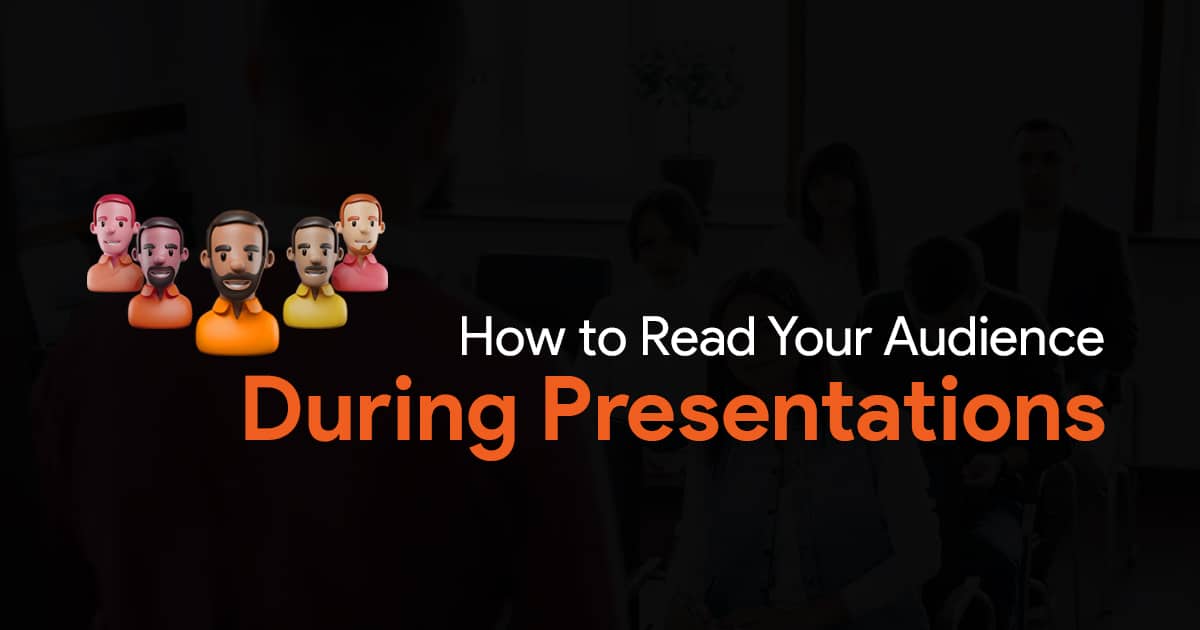How to Read Your Audience During Presentations

You’re about to deliver a presentation that you’ve been working on for days. Everything is going according to plan, but there’s just one thing. At the back of your head, you can’t help but wonder “I wonder how I’m doing. Are these people bored or confused or am I doing a good job?”.
We’ve all been in this situation. It is super important to be able to read your audience if you want to improve your presentation skills. It can help you gauge interest, and check if your presentation is being understood. You can then adjust your pace, tone and your delivery accordingly. It can also help you build trust and empathy with your listeners, making them more engaged and feel more valued.
Let’s take a look at some non-verbal cues that you can learn to notice, to read your audience during a presentation.
Non-Verbal Cues:
Eyes
The eyes, Chico, they never lie. Look at your audience’s eyes. Are they glued to you, flitting nervously or are they looking elsewhere? Eye contact can mean interest, while averted eyes might mean confusion, disinterest, or disagreement.
You should also learn to differentiate between genuine smiles from polite ones. Do your audience look like they’re happy, or are they just smiling at you out of courtesy?
Posture
Check out the posture of your audience. Are they leaning forward or slouching back? Leaning forward could show that they’re engaged, while the latter could imply that they are bored or disengaged. Sometimes, crossed arms can indicate defensiveness.
Gestures
Look closely at the gestures of your audience. Does the audience nod when you talk? It shows agreement. A confused audience may appear to scratch their heads or be distracted. Erratic hand movements could mean nervousness as well.
You can also listen closely to your audience to know what they’re thinking, or reacting to your presentations. Here are some verbal cues you can look for while presenting to read your audience while presenting.
Verbal Cues:
Questions
You can sometimes hear when an audience is confused, or have questions. It could start as a murmur, or whispers. It is your job to encourage your audience to ask questions. Keep an eye out for subtle head tilts and furrowed brows, these are sure signs that a question is waiting for you. Just make sure that you’ve prepared yourself to answer questions.
You can also listen to sounds of note-taking. This often translates to active engagement. Guage your audience’s focus by observing how they take notes and how they use it.
Laughter
If you’re trying to break the ice with humour, look for well-timed humour and not spontaneous chuckles, which may signify confusion.
Silence
Silence could mean that your audience could be digesting your points or formulating questions. If they’re silent all the time, then it’s obviously a sign that they are not engaged at all.
Conclusion
Reading your audience is more of a continuous waltz, and not a one-step shuffle. Every glance, every nod, and every sigh tells a story, so listen keenly. If you watch out for the cues mentioned above, with practice you’ll slowly start getting better at reading your audience. Don’t stress too much about reading your audience during your first few presentations, it’s a skill that you can gradually improve. So take your time, and pretty soon you’ll be a pro at reading your audience during a presentation.


